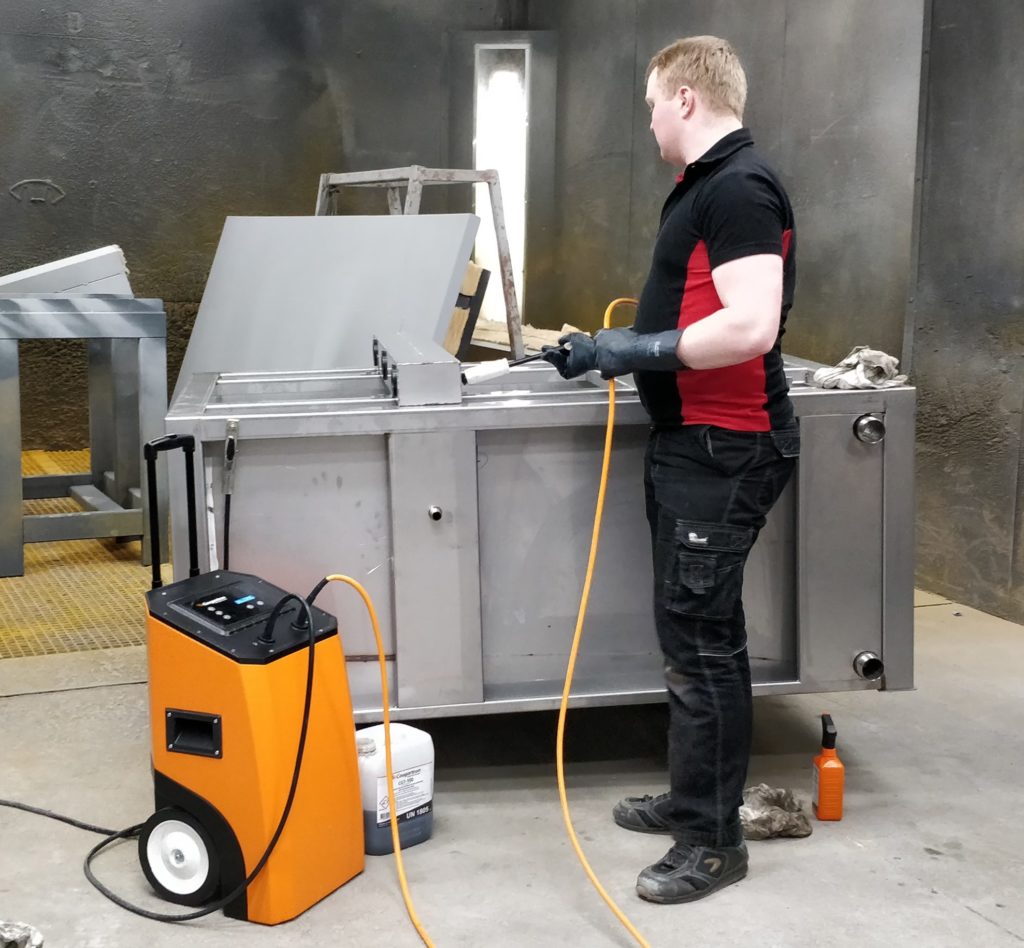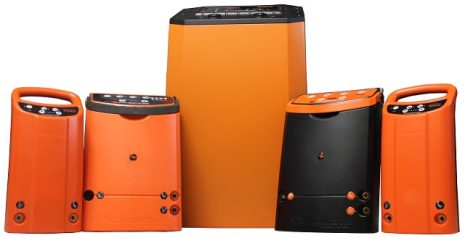Ask Cougartron 5: Are electrolytic weld cleaners fit only for TIG weld cleaning?
Weld cleaning | Ask Cougartron | Tuesday, 12 June 2018
Ask Cougartron 5: Is electrolytic method suitable for all weld types?
The new episode in our Ask Cougartron video & blog series deals with a common misconception related to the work capacity and capabilities of electrochemical weld cleaning systems.
Frequently encountered opinion is that electrochemical systems are neither strong nor fast enough to respond to strict requirements of industrial production.
Since TIG welds are considered to be the easiest to clean, we are often asked whether our equipment is suitable only for this type of work.
Are electrolytic weld cleaners fit only for TIG weld cleaning?
In short, no.
Naturally, some of the models on the market are suitable only for the simplest of tasks. However, this is only a fraction of what the market has to offer. Today there is also a decent number of machine models that are capable of more complicated post-weld operations on different types of welds and surfaces.
We also found it necessary to trace the origins of this common misconception and examine why the electrolytic weld cleaning technology is still considered to be inadequate for the most demanding weld cleaning tasks.
When compared to similar welding methods (MIG, MAG, and Stick), TIG welding is more complex but does not result in the formation of heavier oxides on the metal surface.
If properly performed, TIG welding will only cause a slight discoloration that is easily removed. In addition, TIG welding doesn’t splatter and results in higher quality welds overall.


Electrochemical cleaning method
Since primitive electrochemical systems did not have enough strength to effectively clean heavily-corroded welds, this technology was for a long time considered to be inferior compared to some of the traditional methods like mechanical grinding and chemical pickling.
Those methods still promised faster results and could be used for a variety of cleaning tasks on different types of welds and surfaces including thicker metal plate. On the other hand, primitive electrolytic machine models could effectively clean only smaller and less dirty TIG welds.
The electrochemical method was soon refined by a number of technological innovations. This made it more competitive and more advanced compared to the above-mentioned techniques.
However, the news spread slowly. The new machine models have surpassed their predecessors, but the misconception about the limitations of electrochemical weld cleaning systems still remained widespread among industrial professionals.
This does not mean that there are no machines on the market that are capable of just the simplest tasks. However, next-generation high-end machines can be used for a much wider range of different applications.
But how exactly was the electrochemical weld cleaning technology improved?
Several factors contributed to the sharp rise of the electrochemical method in the past decade.
Stringent production-related laws regulated the use of dangerous pickling chemicals and widened the gap that existed in relation to safe and effective weld cleaning techniques. There was also a need for more flexible solutions for everyday production.
The electrochemical method ticked all the right boxes. However, further development was still needed and highly expected.
The increased availability of new technologies has enabled the improvement of all aspects of electrochemical weld cleaning.
First of all,
- input power levels have increased drastically providing the users with more effectiveness while cleaning. It became possible to clean larger and dirtier welds with less effort and without using labor-intensive hand tools or dangerous chemicals.
- The simplicity of the process has also been enhanced with the introduction of the digital control system.
- Cougartron has played a significant role in developing advanced electrochemical systems that eliminated all the drawbacks of traditional weld cleaning methods.
- Increased speed, efficiency, and improved workplace safety were the main focus areas while working on developing our weld cleaning solutions.
Cougartron weld cleaning systems for all types of welds
As different production situations require different solutions, we have made every effort to cover a wide variety of needs with our product range.
Cougartron FURY 200 and FURY 100– the most powerful electrochemical weld cleaning line on the market. It provides fast and effective results on all weld types.

One of our most popular model Cougartron ProPlus is also capable of effectively cleaning both TIG and MIG (up to 5mm) welds.
As mentioned earlier, we also offer machines that can only be used on TIG welds. They are designed for simple weld cleaning tasks where excessive power is not required.
Times in which electrochemical systems could only be used for simple TIG jobs have long since passed.
Our modern equipment makes it possible to successfully clean the corrosive surfaces after all types of welding. With all the evident benefits of the electrolytic method, there is no excuse to still use outdated and dangerous weld cleaning techniques.

Which Cougartron weld cleaner to choose?
In the article here, we are describing the process of how to choose the correct Cougartron weld cleaning system for your requirements.
But don’t forget, that you can always contact us for a free consultation with one of our product experts.
Fill out the form below, let us know in the comment what production challenge are you facing and we will prepare the best solution for you.
Loading...
Please wait while the form loads.
Cougartron TIG weld cleaning machines
Loading products...
Please wait while the products load.
Cougartron MIG weld cleaning machines
Loading products...
Please wait while the products load.


 English
English  English (US)
English (US)  German
German  Danish
Danish  Swedish
Swedish  French
French  Polish
Polish  Spanish
Spanish